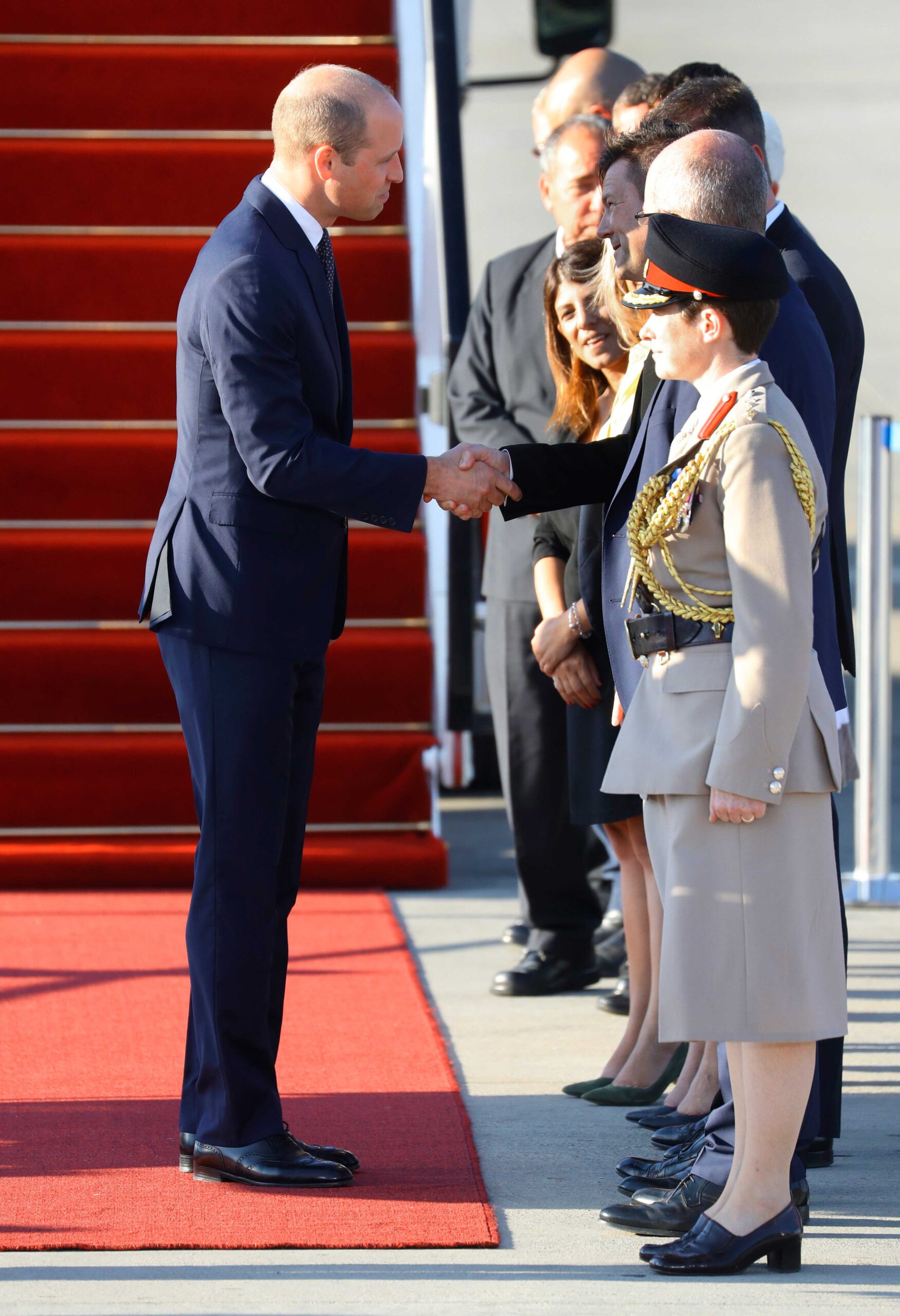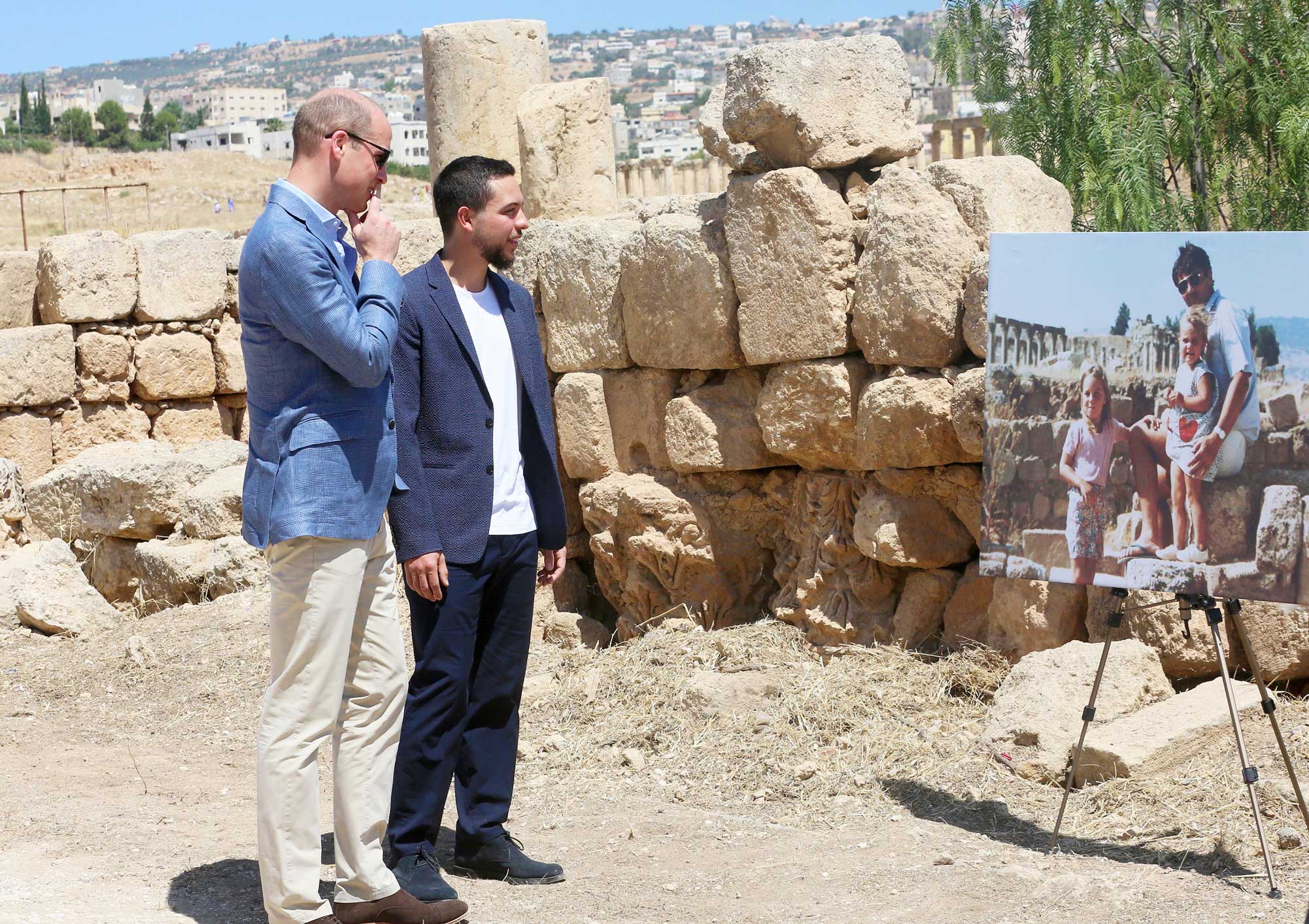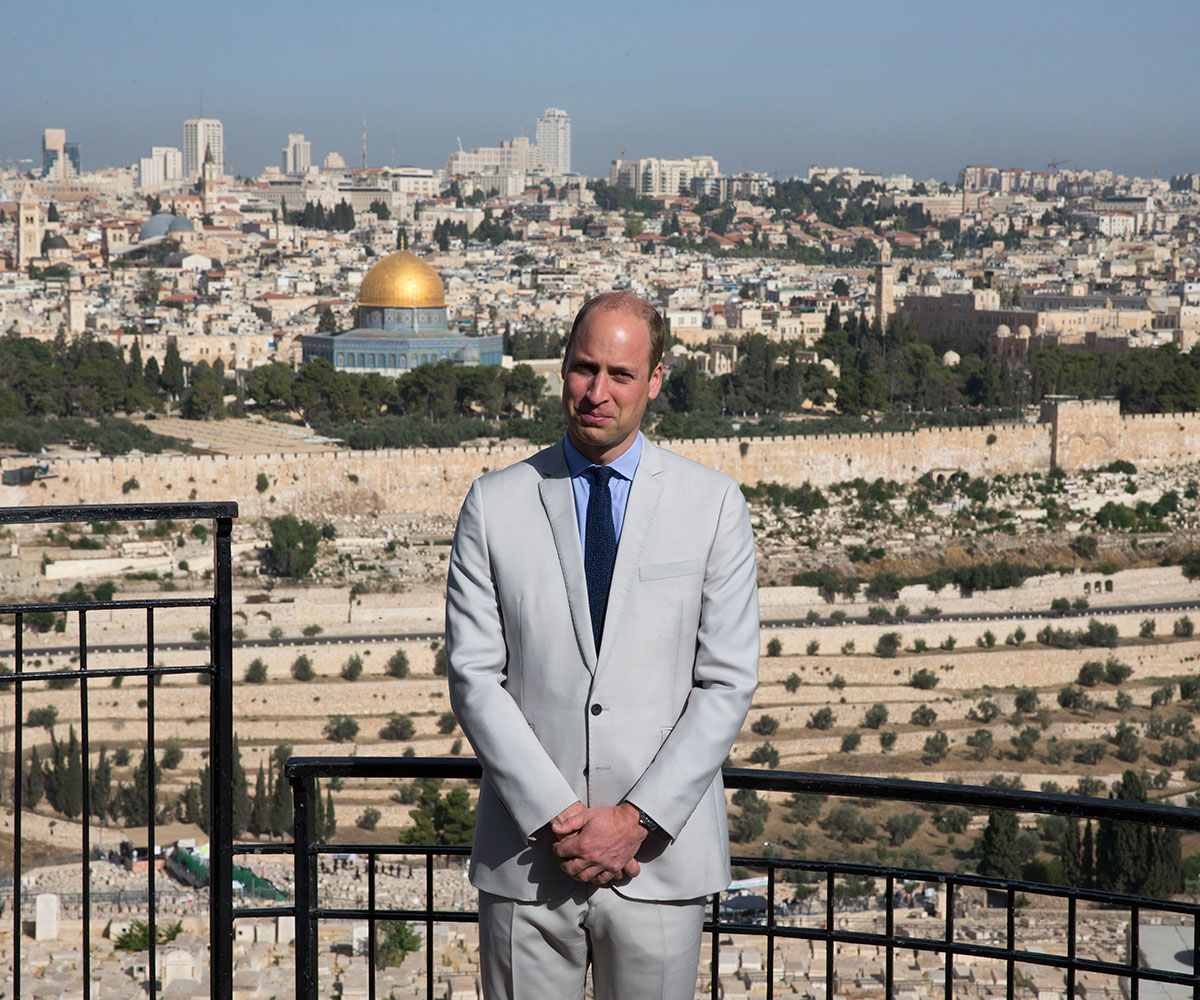Prince William’s historic visit to the Middle East recently was a big deal for the heir to the throne. He’s the first senior royal to have made an official visit to Israel and Palestine after the British government did an about-face and changed its previous advice to stay away from the area, and Israel in particular, due to the conflict there.
His groundbreaking trip last week was not political, insists Kensington Palace, but intended to shine a spotlight on the people of the region – in particular, the younger generation and their aspirations.
However, it seems there was another reason why William (36) wanted to make the trip to Israel and that was to do something very special for his grandfather Prince Philip.

The Duke of Edinburgh’s colourful mother, Princess Alice, was buried on the Mount of Olives in 1988. Unfortunately, her son has only been able to visit the crypt where she is interred once, in 1994, when he accepted a posthumous award for her bravery in helping Jews in Greece during World War II.

Prince Philip with his late mother Princess Alice of Battenburg
While he was there, the Duke of Cambridge visited the Jerusalem grave of his great-grandmother, Philip’s mother Princess Alice of Battenburg, on behalf of the prince, who has only been to his mother’s final resting place once.
It was a poignant moment for William, who was born long after Alice died in 1969, aged 84. Her remains were originally interred at St George’s Chapel, Windsor – where his brother Harry recently married Meghan Markle – but in accordance with her wishes, they were moved in 1988 to Israel, to the Russian church of St Mary Magdalene, above the Garden of Gethsemane on the Mount of Olives.

Prince William at the start of his history-making tour in Jordan.
Because of unrest in the area at the time, Philip (97) was unable to visit the grave until six years later and he has not been back since. Prince Charles (69) visited the grave in 2016, when he went to Israel for the funeral of politician Shimon Peres, but his trip there was not an official one.
However, time was set aside for William on his whirlwind trip to Jordan, Israel and Palestine to pay a very personal tribute to a woman who had a difficult life but always thought of others.
A great-granddaughter of Queen Victoria, Princess Alice was born in Windsor Castle in 1885, and raised in the UK and Germany. Her mother noticed her third child was slow to talk and couldn’t pronounce words properly, and she was eventually found to be congenitally deaf.

But Alice learned to lip read and went on to speak English, German, French and Greek.
Alice fell in love with the dashing Prince Andrew of Greece and Denmark while attending King Edward VII’s coronation in 1902 and after marrying in 1903, they went on to have five children. Philip, their only son, was the youngest. In between having her daughters, she worked as a field nurse during the Balkans Wars of 1912 and 1913, earning a Royal Red Cross from George V.
Following World War I, her husband Andrew and other members of the Greek royal family were forced into exile, and after fleeing Greece and settling in Paris, Alice became deeply religious.

William didn’t take his wife Catherine, Duchess of Cambridge with him to the Middle East – she’s still on maternity leave with Prince Louis – but he did recreate a childhood moment Kate (36) had when she was four and lived in Amman, Jordan.
When Philip was about eight, his mother started suffering from delusions and believing she was receiving divine messages.
She was diagnosed with schizophrenia and Sigmund Freud was consulted about her behaviour. Believing her mental health issues were due to “sexual frustration”, he recommended X-raying her ovaries to “kill off” her libido.
Philip came home one day to find his mother had been taken to an asylum against her will, and that was essentially the end of his family life.
While he was sent to live with relatives in Germany and then the UK, and his father abandoned all responsibility for his children and fled to the South of France, Alice languished in a sanatorium for two years. An attempt to escape by jumping out of a window onto a bag of laundry failed when she was found at a nearby railway station.

While touring the area with Crown Prince Hussein (23), he posed at the Jerash archaeological site in the same spot as Kate’s family shot was taken.
After her release, Alice turned her back on her royal heritage and travelled around Europe, staying in boarding houses before returning to Athens, where she lived in a squalid flat and worked with the poor.
When World War II broke out, she was in the difficult position of having a son, Philip, in the British navy, and several sons-in-law in the Nazi party. The Germans who occupied Greece from 1943 thought she was sympathetic to them, but in fact she was carrying out a heroic act that could have got her killed.
She hid a Jewish widow and two of her five children in her home so they wouldn’t be sent to the concentration camps in Europe. Alice also travelled to Sweden, bringing back medical supplies, and organised homeless shelters and soup kitchens. When Athens was liberated, she was found to be living on bread and butter herself.

The duke got a lesson in frying bread, then found out more about the Dar Na’mah Centre, which supports orphaned women (right).
At one stage, she walked the streets handing out rations to children despite the curfew. When told she could be shot by a stray bullet, she replied, “They tell me you don’t hear the shot that kills you and in any case, I am deaf. So why worry about that?”
After the war, she set up her own nursing order of Greek Orthodox nuns, the Sisterhood of Martha and Mary. When her daughter-in-law Elizabeth became the Queen, Alice created headlines around the world by striding up the aisle of Westminster Abbey in her nun’s habit and wimple.
In 1967, members of the Greek royal family were once again forced into exile and Alice left Athens to live with her son at Buckingham Palace.

Princess Alice’s remains in the Church of St Mary Magdalene in Jerusalem.
Having his mother around gave Philip “inexpressible joy” according to one biographer, but sadly she died two years later. She had been keen to be buried in Gethsemane because she wanted her final resting place to be close to the grave of her aunt, Grand Duchess Elizabeth Feodorovna of Russia.
Alice’s remains were moved to the Jerusalem church in 1988 and in 1994, she was named as a “Righteous Among Nations” – an honour given to non-Jews who risked their lives to save Jewish people during the war. She has also been named a Hero of the Holocaust by the British government.

Speaking of his mother’s heroic actions, Philip has said, “I suspect that it never occurred to her that her action was in any way special. She was a person with a deep religious faith and she would have considered it
to be a perfectly natural human reaction to fellow human beings in distress.”
It must have been a special moment for the prince to see his grandson William officially show the family’s respect for this incredible woman.


